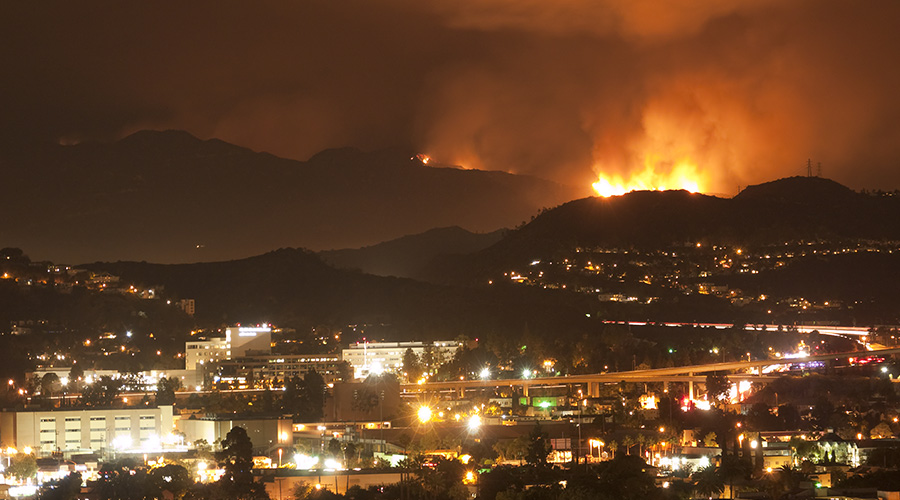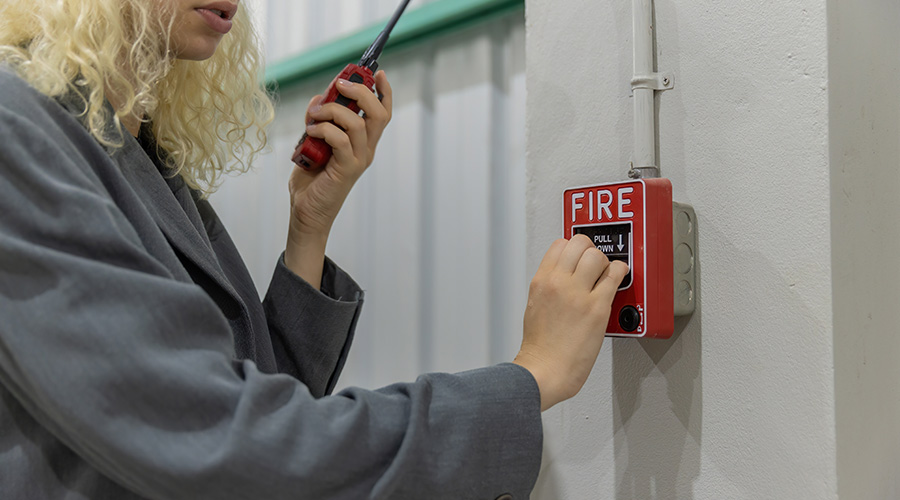Data Analytics, Internet of Things Create New Frontier in Fire and Life Safety
First of a two-part article on how new strategies and technology are shaping fire safety planning in the 21st century.
Wearing Oculus Rift virtual reality headsets, nurses train on evacuation procedures for the newborn intensive care unit in a virtual environment which has beeen rendered to match the hospital they work in down to the K-cups in the breakroom.
That is not a hypothetical scenario, but rather an ongoing research study at Cincinnati Children’s Hospital Medical Center. The study, funded by a federal grant from the Agency for Healthcare Research and Quality, will have four evacuation scenarios, each getting progressively more complex. Sherry Farra, associate professor of nursing at Wright State University, is working in collaboration with the hospital’s clinical director of the newborn intensive care unit and researchers at Miami University, and says that while the study is ongoing and no measurable outcomes can be reported, early evidence suggests the VR training has similar benefits to in-person training, in terms of learning and retaining procedures.
While mannequins are typically used to drill on evacuation procedures for a sensitive population such as the NICU’s, virtual reality training potentially overcomes the challenge of needing to have people present all at once during a training, a feat impossible in a hospital. “Even if you have a live exercise, the majority of the staff will not be able to be involved in that exercise,” says Farra. “If we can show that we have similar outcomes using a virtual reality simulation as if they practiced in a live venue, then everybody can be involved.”
Developing virtual reality scenarios for evacuation procedures is at the leading edge of innovation in fire and life safety. Drones with thermal mapping capabilities are being used to spot thermal anomalies. The Internet of Things (IoT) is allowing ever greater integration between the fire/life safety systems and other building systems like lighting and HVAC. But with systems as critical as fire/life safety, prudent, judicious adoption of new technology is counseled by experts in the field, even as they look forward to a new set of capabilities opening up.
“The infrastructure is lagging way behind the ability to keep up with the technology,” says Casey Grant, executive director of the Fire Protection Research Foundation (FPRF), a research affiliate of the National Fire Protection Association (NFPA). By infrastructure, he means codes, understanding of appropriate system designs, maintenance, training. He says for all the challenges caused by quickly iterating technological advances, it is a good problem to have. “We do want to have intelligent elevators and all of these other things that make buildings more into living beings, with these systems that are causing them to be bristling with intelligence, “ Grant says. “If we can provide critical information, for instance during an event, to the people who need it, when they need it, in the way they need it, whether it’s law enforcement, EMS, or fire, we want to do that.”
Potential use cases
There is a lot that is now possible in fire/life safety systems, especially as they integrate IoT technology. Ayla Networks, an IoT software developer, is seeing more and more interest from fire/life safety system manufacturers on how to integrate IoT into their existing portfolios, specifically to facilitate interoperability with other building systems.
For example, one company with a smoke detection system might want to interoperate with the lighting system. The detector picks up the alarm and sends a command to the lighting system, perhaps making it flash on and off. Or IoT-enabled smoke alarms can send information to first responders to help them formulate an optimized path to the emergency. “It all comes down to being able to get the data out of what historically was a very closed system,” says Justin Ruiz, Ayla’s product marketing manager.
The real cutting edge in fire/life safety systems is not in any one killer app or market-disruptor device, but in the data that can now be extracted from the system. What can be done with all that data is still not immediately clear in all cases, but the potential value is indisputable. “It’s a situation where we’re going to be collecting data, at least initially, without a complete understanding of how we might use it,” says Nelson Bryner, acting chief of the fire research division of the engineering laboratory at the National Institute of Standards and Technology (NIST). “As we overcome that, I think we will find more applications for it.”
He gives an example of a surprising use for big data from the New York City fire department. The city set about collecting data, such as noise complaints, and making the data available to departments outside of the agency which collected it. New York City’s fire department developed a program to try to figure out how to evaluate the fire risk in the city’s 300,000 structures when it had only the resources to inspect 30,000 of them, Bryner says. Once the obvious must-check structures were established, like hospitals and nursing homes, they started looking at available data to see if any correlations arose.
“It turns out as they worked through this, that occupancies with violations of noise ordinance seemed to have a greater than average number of fire safety violations,” Bryner says. “So this began to help them to prioritize their limited resources. The same can be said for building owners.”
Related Topics:













